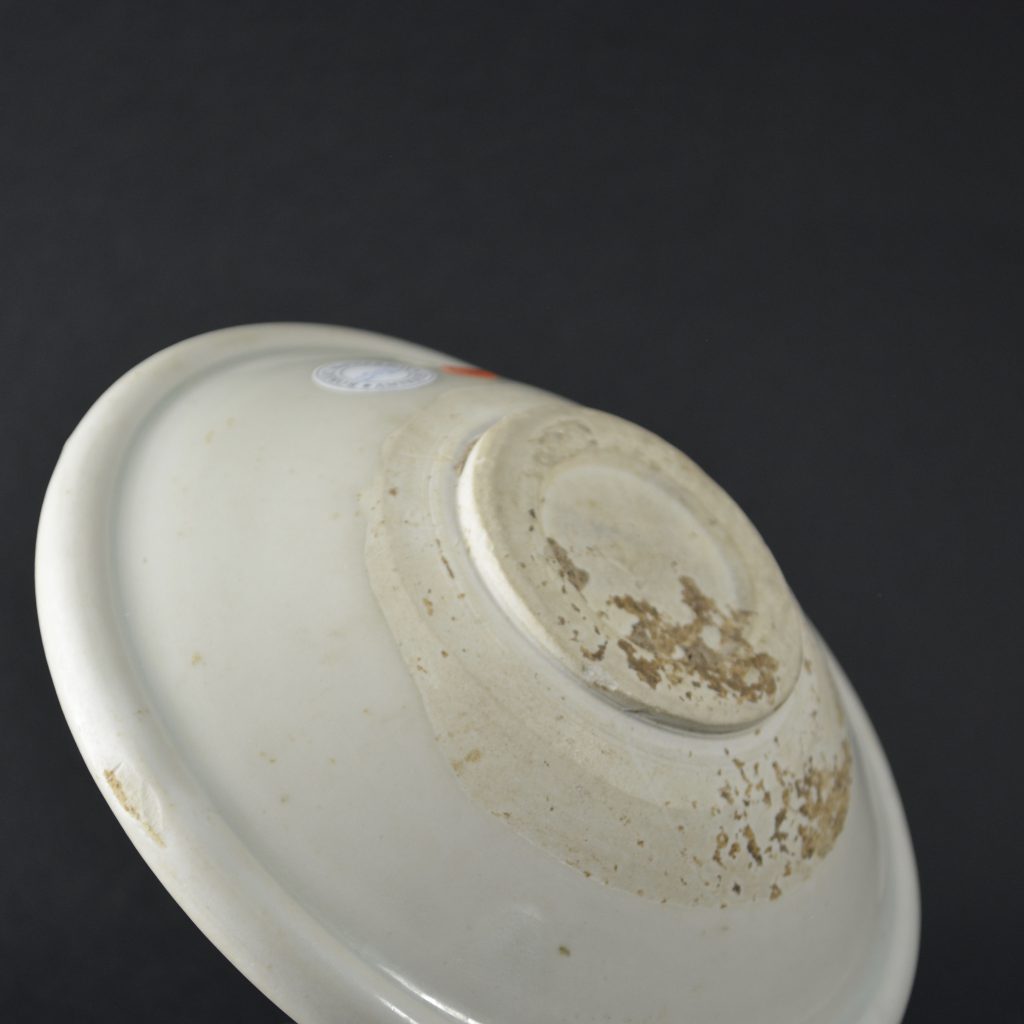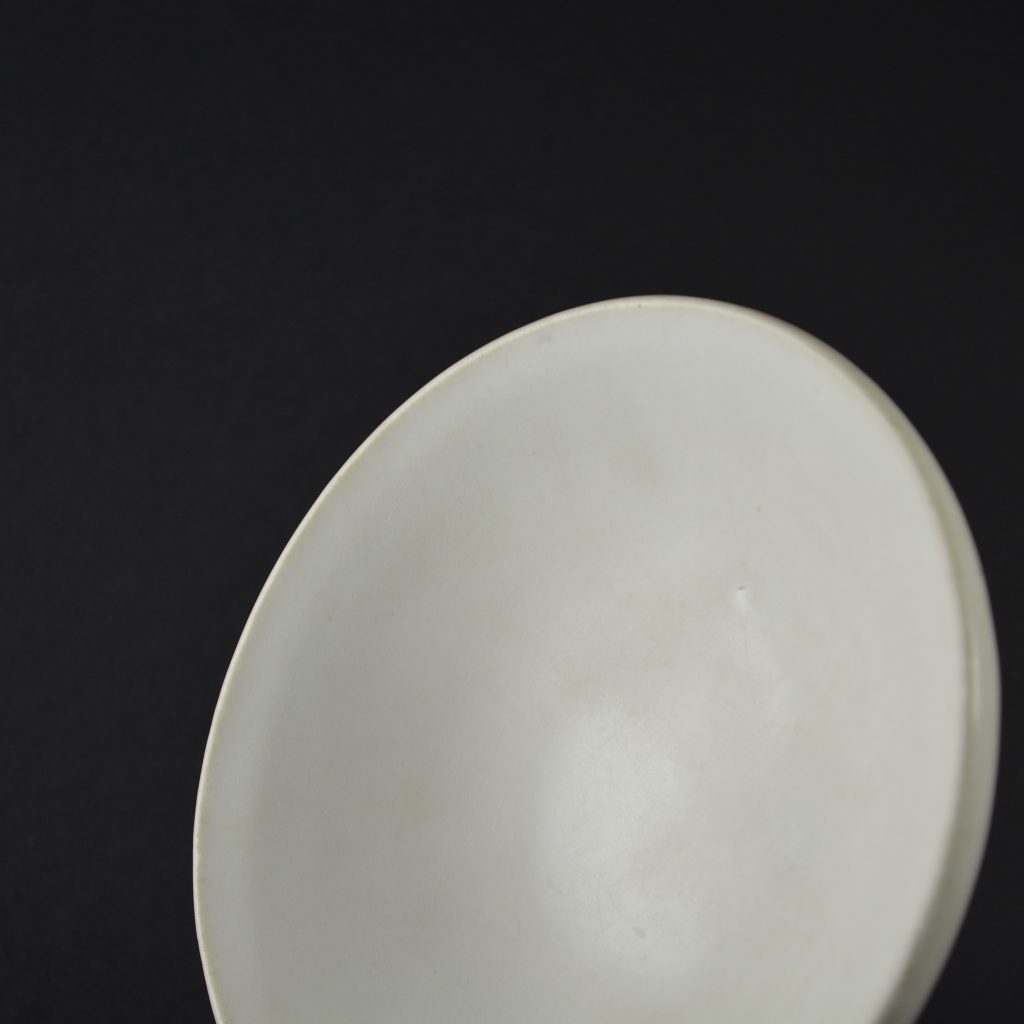
A Tang or Five Dynasties Xing Type Shallow Bowl, 9th or 10th Century.
A small late Tang Dynasty (619 – 906) or Five Dynasties (907-960) white `Xing` type gongxian stoneware bowl, probably from Hebei province, 9th or 10th Century. The rim is of double thickness and the footrim is broad, these are refereferd to as ‘bi-disc’ footrim. Bowls of this form are known as ‘Samarra type’ owing to the exported Xing wares discovered in some quantities at the important early Islamic site of Samarra on the Euphrates.
SOLD
- Condition
- In good condition, the interior with extremely fine scratches to the entire surface. This type of bowl often exhibs this fine web of scatches that only show in a racking light. The unglazed base has burial encrustions.
- Size
- Diameter 13.9 cm (5 1/2 inches). Height 4.1 cm (1 3/4 inches).
- Provenance
- Robert McPherson Antiques. The John Drew Collection of Chinese and Japanese Ceramics.
- Stock number
- 25136
- References
- For similar Tang/ Five dynasties bowl see : Chinese Ceramics from the Meiyintang Collection, Volume Three (II) (Regina Krahl, Paradou Writing. Apparently undated and without an ISBN number) page 423, plate 1422. A gongxian bowl with bi-disc foot kiln waster was recoved from the Baihe kiln site, gongyi county and is now in the Henan provincial Institute of archaeological research.
Information
Xing Ware :
Xing wares were produced in the Xingzhou in southern Hebei, and kiln sites have today been found in Neiqiu and Lincheng counties. They are characterised by a white body, thick modelling and a white slip covered with a thin clear glaze. It is a relatively high-fired ware and thus approaches a true porcelain quality. The Xing kilns reached the peak of their development around the late Tang period, when they supplied tributary wares to the court. Some rare pieces bear inscriptions that suggest a royal connection, such as the term 'ying' (surplus), an abbreviation referring to one of the imperial storehouses reserved for court use.
The John Drew Collection of Chinese and Japanese Ceramics :
John Drew was born in 1933 in Tideswell, Derbyshire, where his father was curate. The family moved to Norfolk whilst he was still a baby and his father became the rector of the parish of Intwood and Keswick. He was educated at Sedbergh School and after National Service in the R.A.F. being taught Russian, he went to Queens College, Oxford to read Greats (Classics). He spent nearly all his working life in various African countries as an archivist, moving to a post at Cape Town University in 1978. He remained in Cape Town after his retirement until his death in 2006. He had a great love of the English countryside (but not the climate) and this is shown in many of the pieces he collected. His taste was varied and ranged from Neolithic right through to the 18th Century. When we sent photograph to his home in Cape Town of pieces we thought he might be interested in, he would write long funny well observed letters back, wanting to add many of the items to his growing collection. Over the years we got to know him better and better, and during the last few years it was very rare for him to not want all the pieces we offered him. We knew his taste, even though his taste was so varied. This was in no small part because he had a very good eye and it was a pleasure finding things that interested him, because they were also very interesting to us. He never got to put his collection on display, something he hoped to do while on retirement in England, so it is with a mixture of pleasure and sadness that we offer these pieces from his collection. Each piece has a John Drew collection label, so when the collection is split up there will be some lasting record of the love and hard work he put into his two decades of collecting.







